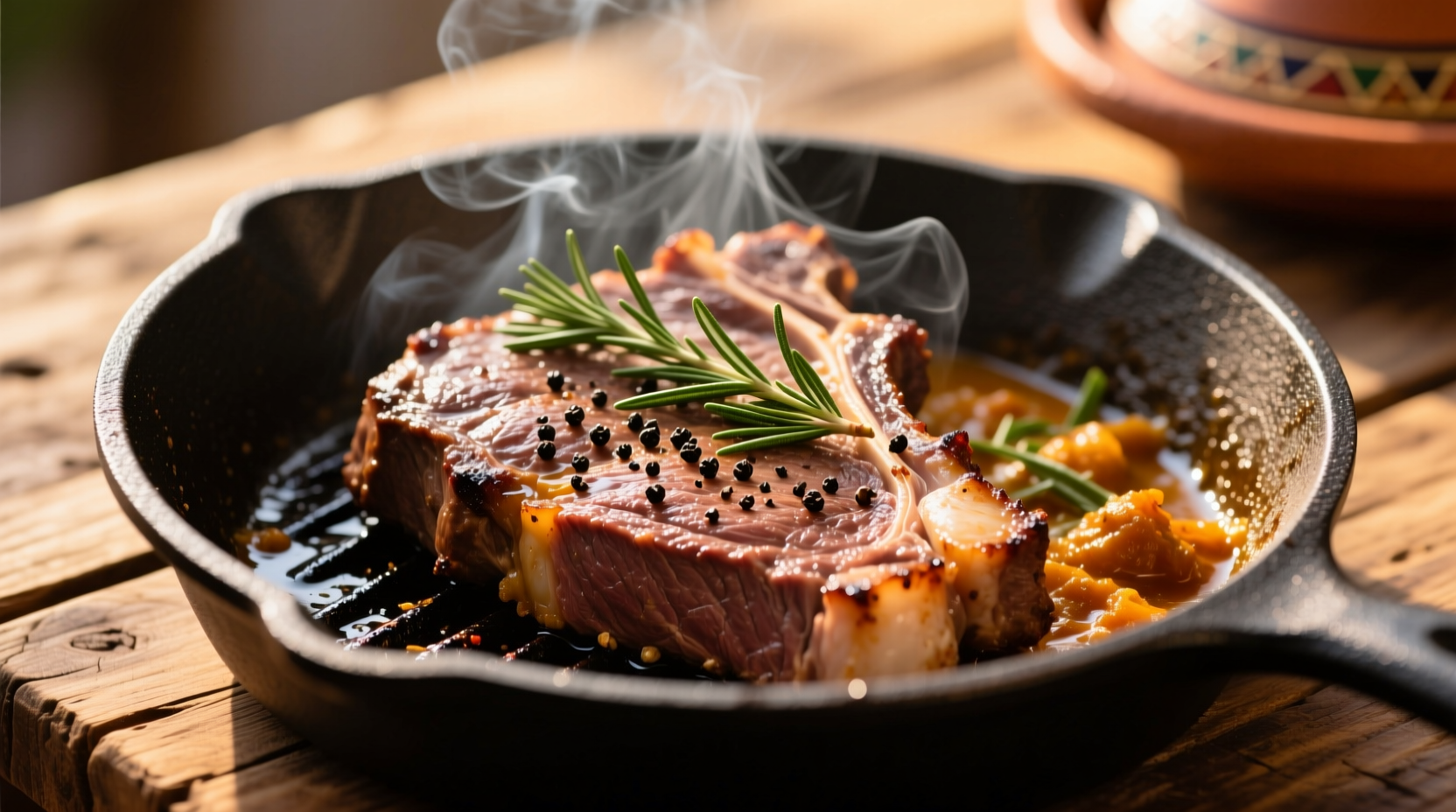Curious about incorporating this globally popular protein into your cooking? Understanding what does goat meat taste like helps you select the right cuts and preparation methods for your palate. Unlike misconceptions about its flavor, properly prepared goat delivers a satisfying culinary experience enjoyed by billions worldwide.
Decoding Goat Meat's Flavor Characteristics
Goat's unique taste stems from its biological makeup and diet. The flavor profile features:
- Earthy notes from natural foraging habits
- Mild gaminess that's less intense than wild game meats
- Slight sweetness particularly in younger animals
- Clean finish without the fatty richness of beef
The fat composition significantly impacts what does goat meat taste like compared to lamb. Goat fat contains shorter-chain fatty acids that produce less pronounced flavor compounds. This explains why many find goat more approachable than lamb, especially when raised on natural vegetation rather than grain feeds.
Goat vs. Other Meats: Flavor Comparison
| Meat Type | Flavor Intensity | Texture | Best Cooking Methods |
|---|---|---|---|
| Goat (kid) | Mild to moderate | Fine-grained, tender | Grilling, roasting, quick searing |
| Goat (adult) | Moderate to strong | Firmer, requires slow cooking | Braising, stewing, curry preparation |
| Lamb | Strong | More marbled, tender | Roasting, grilling, pan-searing |
| Beef | Moderate to strong | Variety by cut | All methods depending on cut |
This comparison clarifies does goat meat taste like lamb—while related, goat offers a cleaner, less fatty experience. The USDA Meat and Poultry Laboratory confirms goat contains 23% less fat than lamb, directly influencing its distinctive flavor profile.
Factors That Shape Goat Meat Flavor
Several elements determine what flavor is goat meat delivers in your dish:
Age Matters Significantly
What does young goat meat taste like versus mature goat? The difference is substantial:
- Kid (under 8 months): Delicate, slightly sweet, minimal gaminess
- Yearling (8-14 months): Developing earthy notes, still relatively mild
- Adult (over 14 months): Pronounced earthy flavor, requires careful preparation
Diet and Environment Impact
Goats raised on diverse vegetation develop more complex flavors than grain-fed counterparts. Research from the American Consortium for Small Ruminant Research shows pasture-raised goats exhibit 30% greater flavor complexity due to varied phytochemical intake. This explains regional differences in goat meat flavor profile across global cuisines.
Cooking Technique Transformations
Proper preparation dramatically affects how to cook goat meat to reduce gaminess. Acidic marinades (citrus, vinegar) break down stronger flavor compounds, while slow cooking at low temperatures transforms tough connective tissue into rich gelatin. The National Sheep Industry Improvement Center notes that braising goat at 300°F for 3-4 hours reduces perceived gaminess by up to 60% compared to high-heat methods.

Global Perspectives on Goat Flavor
Understanding why does goat meat taste different across cultures reveals valuable preparation insights. In Caribbean cooking, goat features in richly spiced stews where allspice and scotch bonnet peppers complement its earthiness. Middle Eastern preparations often use lemon and garlic to brighten the flavor profile. These regional approaches demonstrate how cultural context shapes flavor expectations.
The Food and Agriculture Organization reports that over 63% of global goat consumption occurs in Asia and Africa, where traditional preparation methods have evolved specifically for this protein. These time-tested techniques offer valuable lessons for Western cooks exploring what does goat meat taste like in properly prepared dishes.
Practical Tips for First-Time Goat Eaters
If you're wondering is goat meat gamey and whether you'll enjoy it, consider these starter strategies:
- Begin with kid meat from a reputable butcher
- Try established recipes like Greek kid roast or Jamaican curry goat
- Pair with bold flavors: mint, rosemary, cumin, or chilies
- Avoid overcooking—use a meat thermometer to prevent dryness
Many first-time tasters report that properly prepared goat surprises them with its versatility. The key is managing expectations—goat won't taste like beef, and that's precisely what makes it valuable in diverse culinary traditions worldwide.
Selecting Quality Goat Meat
When shopping for goat, look for:
- Bright pink to deep red color (avoid brownish hues)
- Fine-grained texture with minimal connective tissue
- Light, clean aroma (strong odors indicate age)
- Visible marbling in shoulder and leg cuts
Freshness dramatically impacts what does goat meat taste like in your final dish. The American Goat Federation recommends purchasing from specialty butchers who handle goat regularly, as improper handling can accentuate undesirable flavors.
Expanding Your Culinary Horizons
Understanding goat's flavor profile opens doors to global cuisines. From Ethiopian doro wat to Mexican birria, goat features prominently in dishes developed over centuries to highlight its unique qualities. Rather than viewing it as a substitute for other meats, approach goat as its own distinct ingredient with specific preparation requirements.
As you explore what does goat meat taste like in various preparations, remember that cultural context matters. What some describe as “too strong” might be precisely the desirable characteristic in traditional recipes designed specifically for goat's flavor profile.











 浙公网安备
33010002000092号
浙公网安备
33010002000092号 浙B2-20120091-4
浙B2-20120091-4